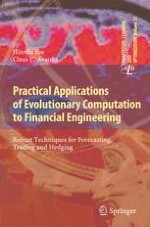“Practical Applications of Evolutionary Computation to Financial Engineering” presents the state of the art techniques in Financial Engineering using recent results in Machine Learning and Evolutionary Computation. This book bridges the gap between academics in computer science and traders and explains the basic ideas of the proposed systems and the financial problems in ways that can be understood by readers without previous knowledge on either of the fields. To cement the ideas discussed in the book, software packages are offered that implement the systems described within.
The book is structured so that each chapter can be read independently from the others. Chapters 1 and 2 describe evolutionary computation. The third chapter is an introduction to financial engineering problems for readers who are unfamiliar with this area. The following chapters each deal, in turn, with a different problem in the financial engineering field describing each problem in detail and focusing on solutions based on evolutionary computation. Finally, the two appendixes describe software packages that implement the solutions discussed in this book, including installation manuals and parameter explanations.
